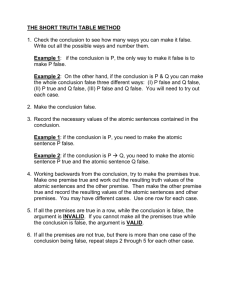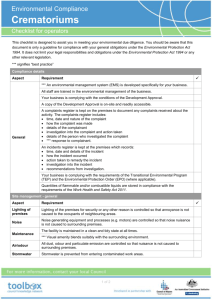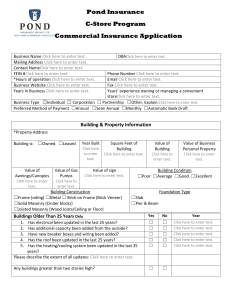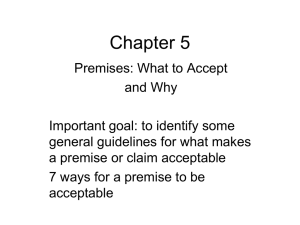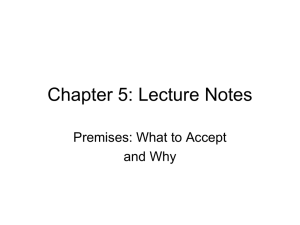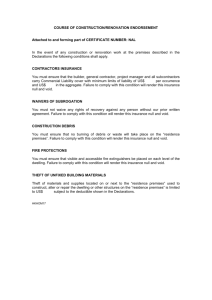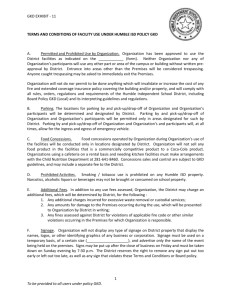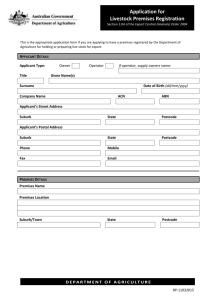What makes premises unacceptable: PPT Presentation
advertisement
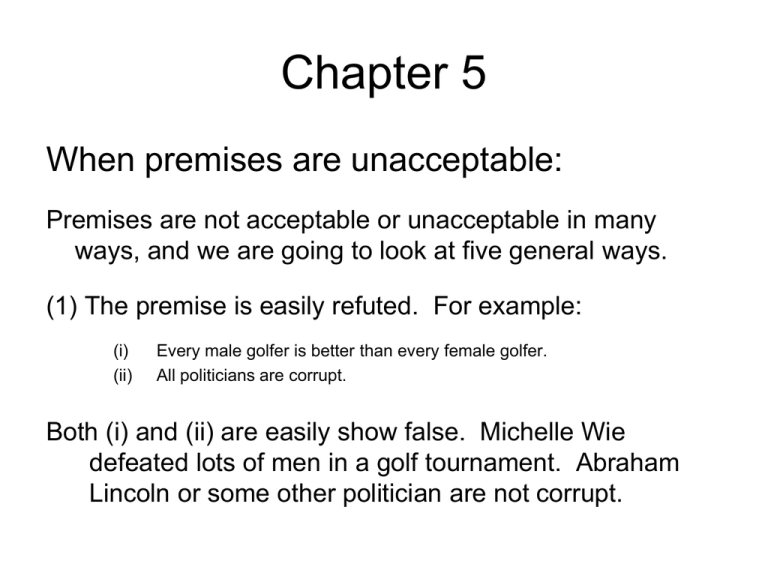
Chapter 5 When premises are unacceptable: Premises are not acceptable or unacceptable in many ways, and we are going to look at five general ways. (1) The premise is easily refuted. For example: (i) (ii) Every male golfer is better than every female golfer. All politicians are corrupt. Both (i) and (ii) are easily show false. Michelle Wie defeated lots of men in a golf tournament. Abraham Lincoln or some other politician are not corrupt. Chapter 5 (2) Claims that know a priori to be false. There are some statements that are know to be false by the very understanding. For example, (i) The triangle did not have three sides. (ii) The square was not a rectangle. (iii) He was both awake and asleep at the same time. All of these statements are false and are know to be false without having to have any experience. We can reason that they cannot be true by their very nature. Chapter 5 (3) Inconsistent premises make the premises unacceptable. If the premises of an argument directly or indirectly contradict each other then one of them is unacceptable. Imagine that in the course of a long argument the following two statements are made: (i) (ii) James is always mean to Judy. James kindly helped Judy with her logic homework. Now it is clear that if (ii) is true, then (i) is false. This kind of contradiction is implicit because we don’t have a claim and its direct opposite like: James is not always mean to Judy, which would be a direct contradiction. Chapter 5 (4) Vagueness or ambiguity can give rise to unacceptable premises. For example, (a) Aggressive behavior is rampant in young boys. The fact is that the terms aggressive behavior, rampant, and young are vague and make it so that this premise is not acceptable in its current form. In order for us to accept a premise it has to be presented with clear language that is neither vague nor ambiguous. Chapter 5 (5) The fallacy of begging the question occurs when the premises are no more acceptable than the conclusion. Sometimes this is referred to as circular reasoning or circularity. To beg the question in the logical sense occurs when a premises is not acceptable because it states or assumes the conclusion. The following argument begs the question: The killing of innocents is wrong. Abortion is the killing of innocents. Therefore, abortion is wrong. Chapter 5 The credibility of the source is important. Asking these questions is important. (1) (2) (3) (4) (5) Who wrote the material? What are the qualifications of the person? With what institution or group, if any, is the person affiliated? If there is an institution or group, what is its nature or credibility? Is there information that would enable you to contact this author and make inquiries about the material? (6) Does this person give sources for his or her claims? Assessing Comparative Claims •Are both terms of the comparison clear? Is important information missing? •Is the same standard of comparison used for both terms? Are the same reporting and recording practices being used? •Are the items comparable? •Are before/after changes genuine or due only to changes in reporting and recording practices? •Is the range of comparison too broad or too vague to be meaningful? •Is the comparison itself too obscure to be meaningful? •Is the comparison expressed as an average? If so, be sure that important details have not been omitted? Chapter 5 Summary of Unacceptable Conditions (1) One or more premises are refutable on the basis of common knowledge, a priori knowledge, or reliable knowledge from testimony or authority. (2) One or more premises are a priori false. (3) Several premises, taken together, produce a contradiction, so that the premises are explicitly or implicitly inconsistent. (4) One or more premises are vague or ambiguous to such an extent that it is not possible to determine what sort of evidence would establish them as acceptable or unacceptable. (5) One or more premises would not be rationally acceptable to any person who did not already accept the conclusions. In this case, the argument begs the question or is circular.
